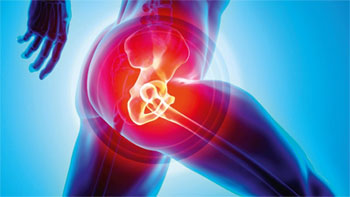 Hip replacement is one of the top five best surgeries in all of medicine with 98-99% excellent results. Patients love their hip replacements. The hip replacement surgery takes Dr. Kang approximately one hour. A typical patient is in the hospital for two days and then they go home with home health for two weeks. Following the home health, the patient begins outpatient therapy for four weeks. At that point, the patient is usually doing very well, and any precautions are discontinued. At the twelve week mark the patient is able to do any activities they want to (skiing, hiking, bowling, etc.). The surgery has excellent results with longevity of the hip at around 25 years.
Hip replacement is one of the top five best surgeries in all of medicine with 98-99% excellent results. Patients love their hip replacements. The hip replacement surgery takes Dr. Kang approximately one hour. A typical patient is in the hospital for two days and then they go home with home health for two weeks. Following the home health, the patient begins outpatient therapy for four weeks. At that point, the patient is usually doing very well, and any precautions are discontinued. At the twelve week mark the patient is able to do any activities they want to (skiing, hiking, bowling, etc.). The surgery has excellent results with longevity of the hip at around 25 years.
What are the downsides of Hip Replacement Surgery?
- – 1% risk of infection. We keep the risk down by giving you antibiotics before and after surgery
- – 1% risk of a blood clot. We give you blood thinners after surgery and encourage you to move quickly after surgery. The sooner you move and the more active you are the less likely you are to have a blood clot.
If order to decrease the likelyhood of getting an infection we need the skin to heal. We encourage a healthy diet of fruits, vegetables and protein. It is also very important to have a nutritious diet leading up to surgery.
A Typical Candidate For Hip Replacement
Hip Replacement Patient Testimonials
92 Year Old Total Hip Replacement Patient
Sharon is 3 weeks out of surgery with a right
total hip replacement
World Series Champion John Lowenstein talk about his hip replacement experience.
Debra was walking two weeks after Hip replacement surgery.
Help Links
- Identifying Hip Pain
- What is osteonecrosis of the hip?
- Replacement Surgery for Hip Fractures
- Revision Total Hip Arthroplasty
- Sickle Cell Anemia and Total Hip Replacement
- Surgical Options for Hip Arthritis
- What are Hip Replacement Implants Made Of?
